Sports Nutrition Update from the American College of Sports Medicine
 Staying on top of the latest sports nutrition information is a challenge. That’s why I attend the annual meeting of the American College of Sports Medicine (ACSM). ACSM is a professional organization for sports medicine doctors and health-care providers, sport dietitians, exercise physiologists and sport science researchers. More than 3,000 ACSM members gathered in Minneapolis (May 2018) to share their knowledge and latest research. The following summarizes a Sports Nutrition Update session presented by many leading exercise scientists from around the globe.
Staying on top of the latest sports nutrition information is a challenge. That’s why I attend the annual meeting of the American College of Sports Medicine (ACSM). ACSM is a professional organization for sports medicine doctors and health-care providers, sport dietitians, exercise physiologists and sport science researchers. More than 3,000 ACSM members gathered in Minneapolis (May 2018) to share their knowledge and latest research. The following summarizes a Sports Nutrition Update session presented by many leading exercise scientists from around the globe.
Fat vs. Carb
Gareth Wallis PhD, Univ. Birmingham, UK
Which will better enhance athletic performance: A high carbohydrate or a high fat sports diet? Despite growing interest in a high fat sports diet, research does not support it for athletes who exercise at high intensity. Rather, research supports consuming 3 to 4.5 grams carbohydrate per pound (7-10 g carb/kg) body weight per day to be well fueled for hard training and competitive events.
Grains, fruits and veggies are obligatory if you want to exercise hard. Some athletes eat a high fat diet for training and then switch to carb-loading before a competitive event. Bad idea. The enzymes involved in metabolizing carbohydrate become less active, so the muscles are less able to access carbs for fuel when it is needed for winning sprints and surges.
Protein for Athletes
Nicholas Burd PhD, Univ Illinois and Trent Stellingwerff PhD. Canadian Sport Institute
If you want to build muscle, when is the best time to eat protein: before, during or after you lift weights? It might not actually matter because resistance exercise stimulates a muscle-building effect that is most robust within the first 4 hours but lasts for 1 to 2 days. You need not carry a protein shake around the gym! More important is to pace your protein intake evenly throughout the day.
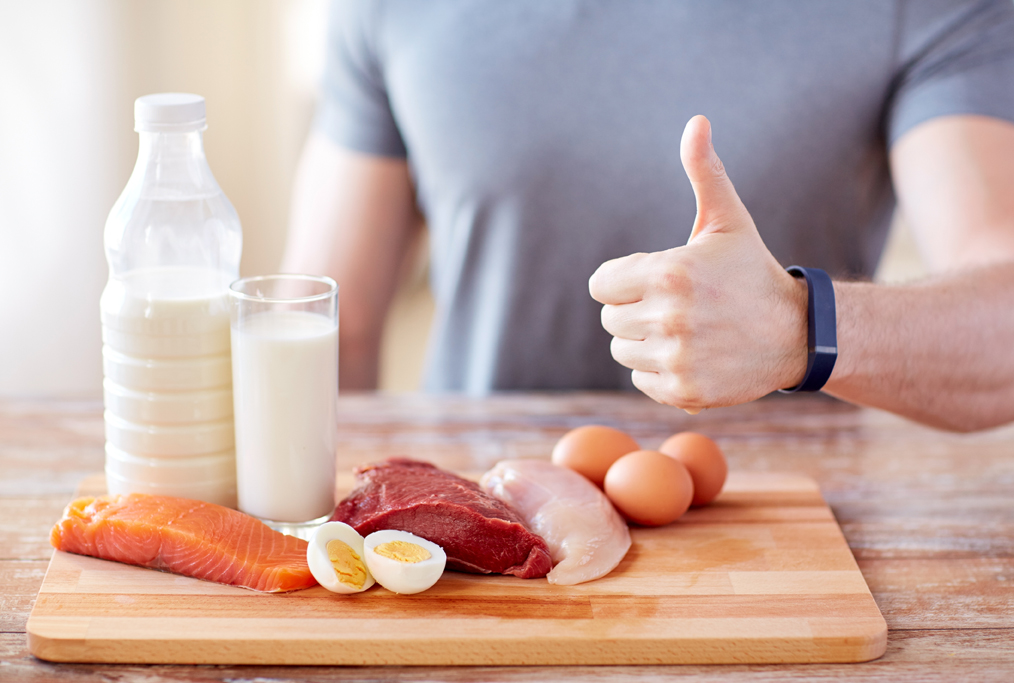 Resistance exercise is far more potent than a high protein diet for increasing strength and muscle gains. That said, most athletes could expect to see only a gain of about 2 pounds (1 kg) of muscle in 13 weeks. That’s not very much compared to what they really want to see.
Resistance exercise is far more potent than a high protein diet for increasing strength and muscle gains. That said, most athletes could expect to see only a gain of about 2 pounds (1 kg) of muscle in 13 weeks. That’s not very much compared to what they really want to see.
Maximal anabolic (muscle-building) effects are seen with about 25 to 30 g protein per meal. More precisely: 0.75 g protein per pound of body weight per day, or 0.1 to 0.2 g protein per pound per meal in young men. More than that has little or no further benefit. However, these recommendations do change with age. If you are >50 years old, you should target an additional 10 grams of high quality protein (milk, egg, fish, soy) per meal. That’s just a little bit more: a glass of milk or 1.5 ounces of meat-fish-chicken.
Despite rumors, protein does not damage the kidneys nor cause a decline in kidney function. Even people with chronic kidney disease should consume the RDA for protein (0.8 g/kg). A high protein diet also does not cause bone loss. Bone is 40% to 50% protein (collagen).
Over-consuming protein is not only a waste of money but it also stresses the environment. As athletes, we need to take a holistic and whole-foods approach to our diets. Natural protein-rich foods, as opposed to processed supplements, are best (if compatible with your training schedule) because they offer a complex and complete matrix that is more effective than processed proteins. One example of the benefits of whole foods can be seen with eggs. A whole egg promotes 40% greater muscle protein synthesis in the 5 hours post-exercise as compared to eating just the egg white (van Vliet AJCN 2017). Nutrient interactions seem to facilitate a more robust response when compared to eating isolated protein.
Sport Supplements
Eric Rawson PhD RD, Messiah College
There is no one single sport supplement that works for all athletes. To better understand why, we need a more specific scientific approach to studying supplements based on age, sex, body size, training status, and genetics. That would help us give better advice to target groups of athletes, rather than simply make population-wide recommendations. Many athletes take multiple supplements, so research with “stacked” supplements would also be helpful. Here’s some of what we do know:
Creatine enables an athlete to lift harder in the training room—and build more muscle. But not everyone is a responder. For example, 3 of 11 subjects in a research study had a strong positive response, 5 had a slight response—and 3 did not respond at all (Syrotuik, Bell 2004). Why not? Maybe their daily diets impacted their baseline creatine levels?
Creatine is found in meat and other animal proteins. When a meat-eating athlete goes on a meat-free lacto-ovo-vegetarian diet (milk, eggs, beans) for 26 days, his or her creatine levels will drop. (Lukaszuk, 2005). To normalize the level, athletes could take creatine monohydrate supplements (the most effective form of creatine).
Caffeine is a known energy-enhancing sport supplement. Your response to caffeine will depend on your genetics. Caffeine works best when you are starting to fatigue. Athletes can consume it in coffee, tea, soda, gels, gum, and pills, preferably consumed with carbs.
Sodium bicarbonate is used by some athletes to buffer the lactic acid that builds up during intense bursts of exercise. Research suggests peak response times can vary widely, from 40-165 minutes. (Jones 2016 ISSN). This variability makes it hard for exercise scientists to offer firm recommendations; hence, outcomes vary. Sub-elite athletes seem to respond better then elite athletes. Because sodium bicarbonate easily causes nausea and vomiting, a solution it to take it in gastro-resistant capsules.
 Fluids and Hydration
Fluids and Hydration
Linsday Baker, R&D Principal Scientist, Gatorade Sports Science Institute, Pepsi Co.
When you sweat, you lose proportionately more water than sodium, hence sodium levels in the blood increase with dehydration. The amount of sodium you lose in sweat varies from a lot to a little, related to both sweating rate and how well you are acclimated to exercising in the heat, among other factors. A high concentration of sodium in your blood stimulates thirst.
Thirsty athletes have three ways they deal with replacing fluid losses: hit-or-miss ad lib drinking as desired; drinking to quench thirst; and drinking on a set schedule. The effectiveness of these strategies depends on the individual athletes, availability of fluids, the weather, and exercise intensity and duration. If you happen to have a lot of tattoos, take note: tattooed skin may sweat less and excrete saltier sweat.
Nancy Clark, MS, RD counsels both casual and competitive athletes at her office in Newton, MA (617-795-1875). Her best selling Sports Nutrition Guidebook and food guides for marathoners, cyclists and soccer players offer additional information. They are available at www.NancyClarkRD.com. For her popular online workshop, see www.NutritionSportsExerciseCEUs.com.

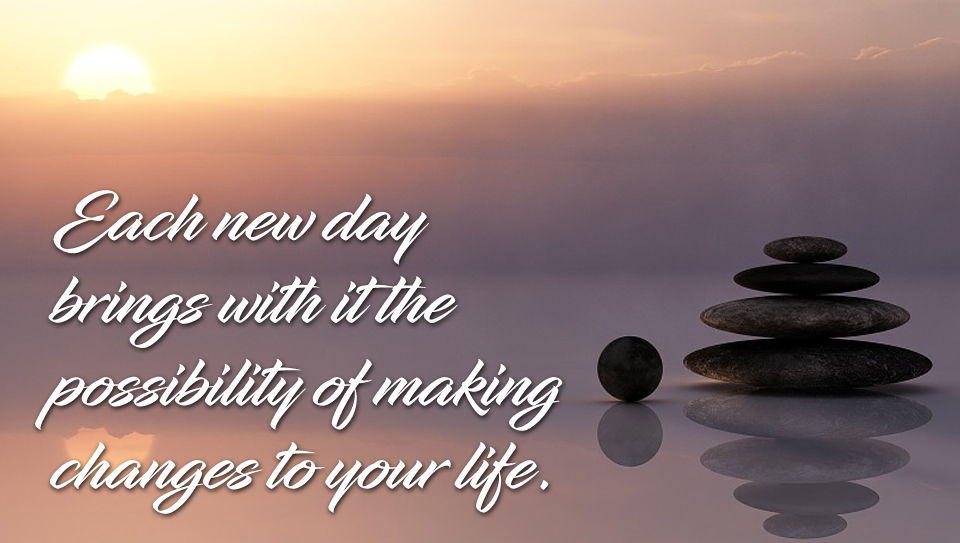


 Planet earth really should be called the water planet. 71% of the earth’s surface is covered with water. Also, when you explore land, air, and sea, it becomes quite obvious that perhaps the most interesting world lies under the water. An ecosystem so diverse, expansive and fascinating.
Planet earth really should be called the water planet. 71% of the earth’s surface is covered with water. Also, when you explore land, air, and sea, it becomes quite obvious that perhaps the most interesting world lies under the water. An ecosystem so diverse, expansive and fascinating. Your goal it a minimum of 8- eight oz glasses (2 quarts) of water a day. Try to get it in earlier in the day so that you are not visiting the bathroom all night. There may even be added health benefits to drinking a full glass of water
Your goal it a minimum of 8- eight oz glasses (2 quarts) of water a day. Try to get it in earlier in the day so that you are not visiting the bathroom all night. There may even be added health benefits to drinking a full glass of water 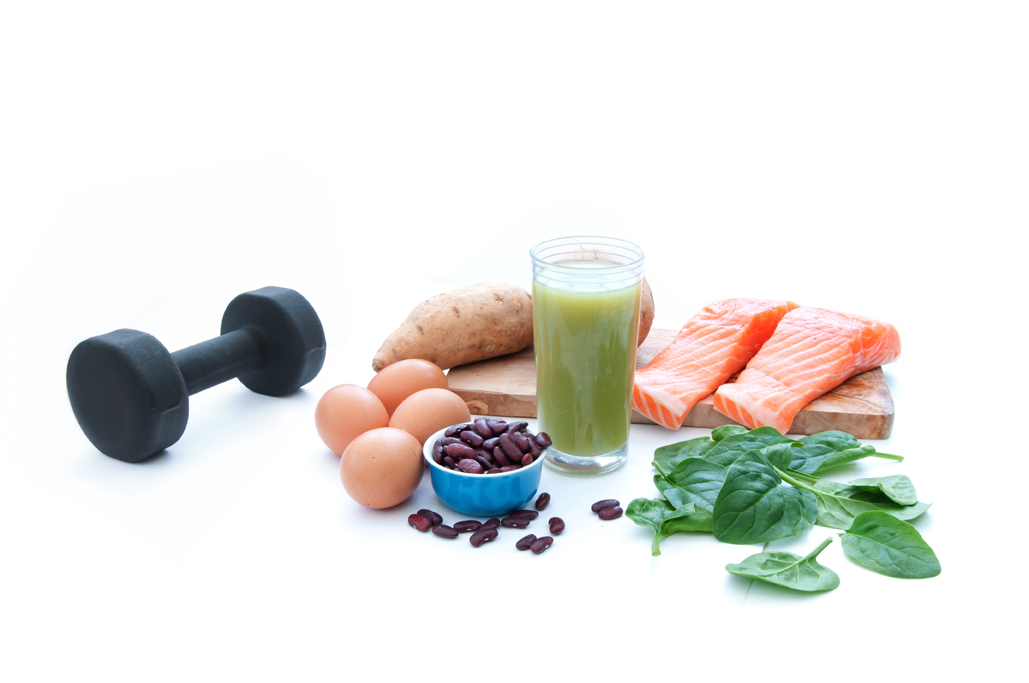
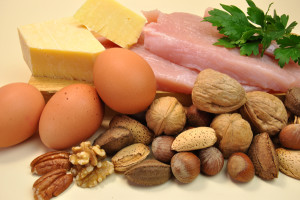 The current recommendation for protein intake for healthy adults is 0.8 g protein per kilogram of body weight per day. This number was determined using studies on healthy young adults. But consider that body composition changes as people get older. Once adults pass the physical prime of their teens and 20’s, they lose an average of 10 ounces of lean body mass a year. This is mostly in the form of muscle tissue. Few people actually lose 10 ounces of weight a year. Instead, most gain about a pound a year, so the loss of lean tissue is masked. Another way to look at this is the average person gains about 1 pound and 10 ounces of body fat per year. This phenomenon, called sarcopenia, is derived from Greek words for “vanishing flesh.” This change in body composition contributes to impaired wound healing, loss of skin elasticity, and an inability to fight infection.
The current recommendation for protein intake for healthy adults is 0.8 g protein per kilogram of body weight per day. This number was determined using studies on healthy young adults. But consider that body composition changes as people get older. Once adults pass the physical prime of their teens and 20’s, they lose an average of 10 ounces of lean body mass a year. This is mostly in the form of muscle tissue. Few people actually lose 10 ounces of weight a year. Instead, most gain about a pound a year, so the loss of lean tissue is masked. Another way to look at this is the average person gains about 1 pound and 10 ounces of body fat per year. This phenomenon, called sarcopenia, is derived from Greek words for “vanishing flesh.” This change in body composition contributes to impaired wound healing, loss of skin elasticity, and an inability to fight infection.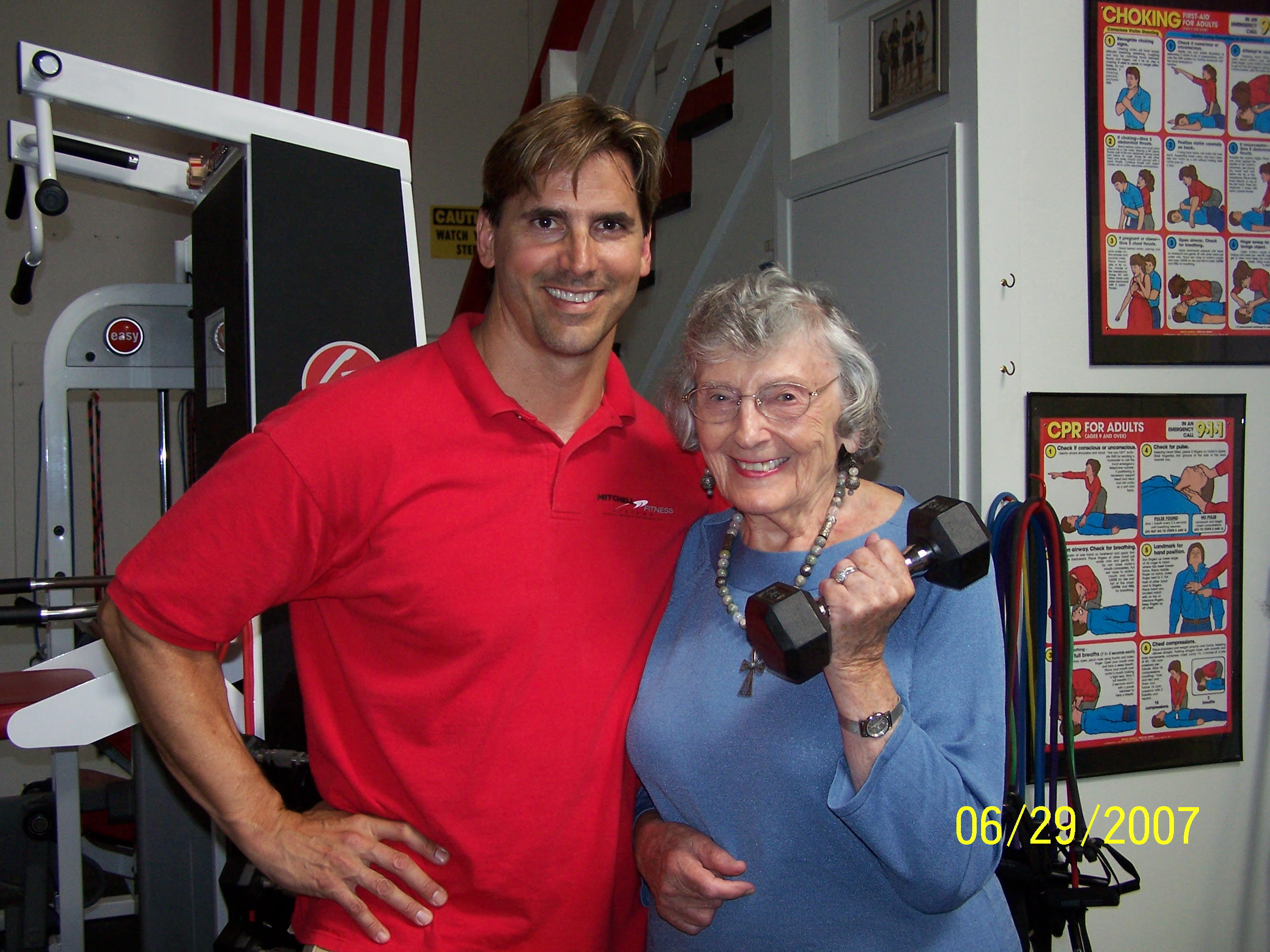

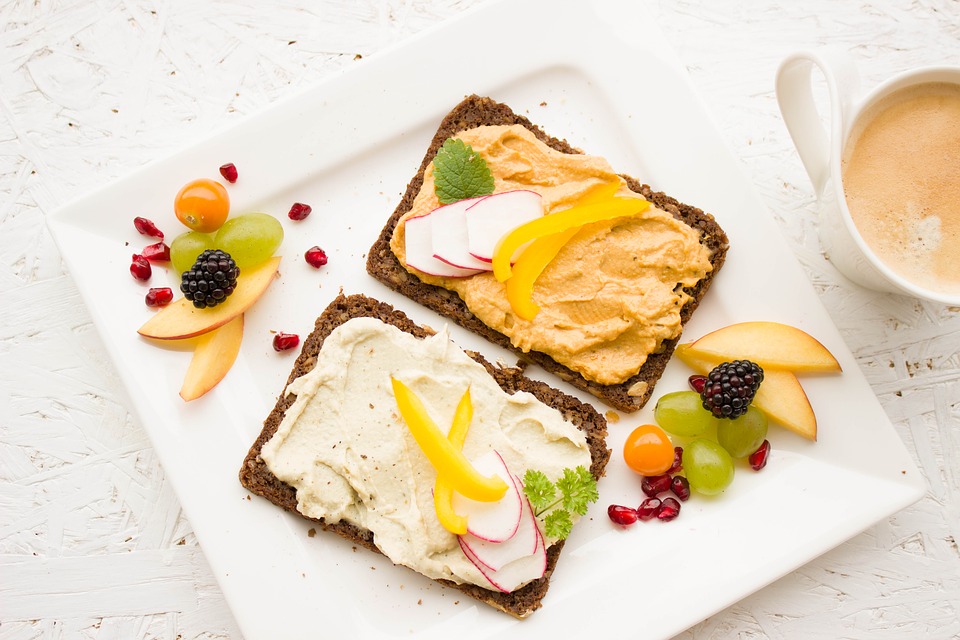 Also, there is a beauty in eating from a color palette. Having red, such as red peppers and watermelon; orange — baby carrots; yellow — pre-cut peppers and mangoes; green — celery, spinach, lettuce, honeydew; blue — blueberries; purple — beet juice (which is made for us in a juice press or machine). It’s so much more satisfying than having your typical beige and brown food (unless you include hummus and almond butter!).
Also, there is a beauty in eating from a color palette. Having red, such as red peppers and watermelon; orange — baby carrots; yellow — pre-cut peppers and mangoes; green — celery, spinach, lettuce, honeydew; blue — blueberries; purple — beet juice (which is made for us in a juice press or machine). It’s so much more satisfying than having your typical beige and brown food (unless you include hummus and almond butter!).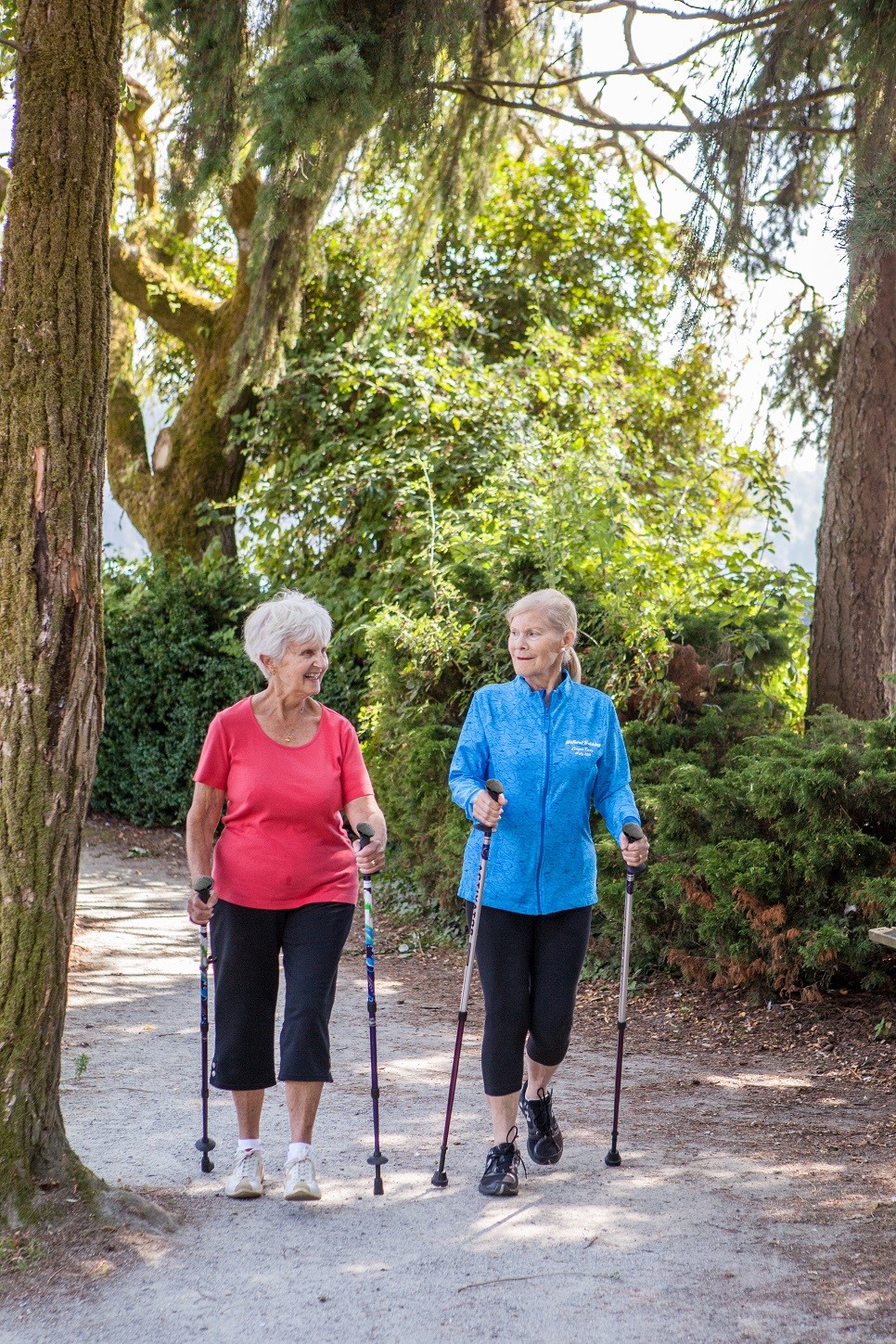
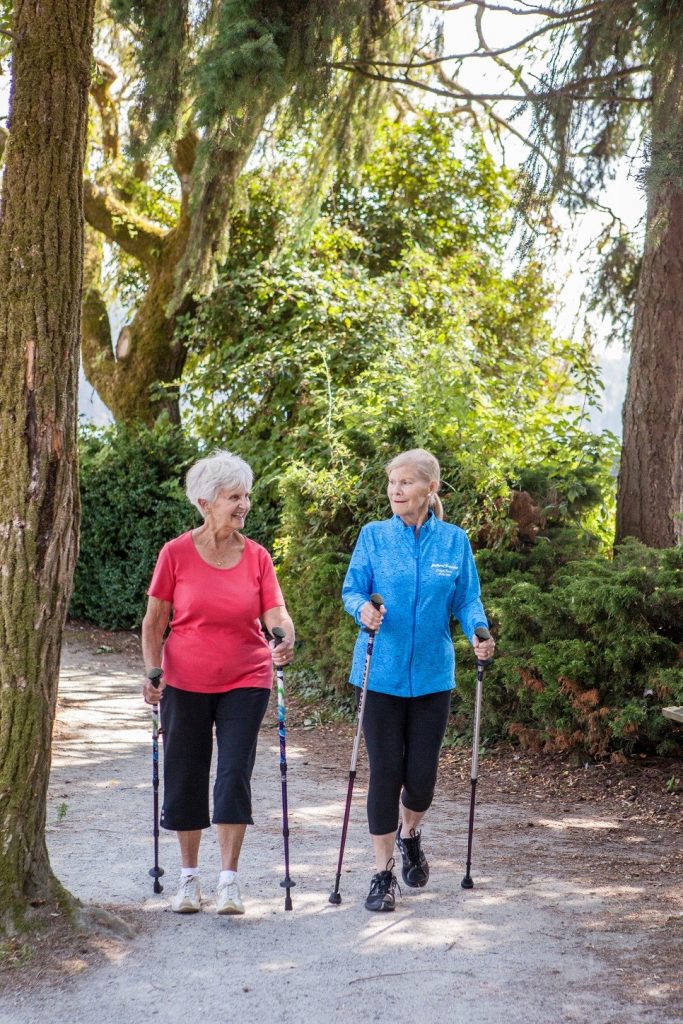 Research Benefits
Research Benefits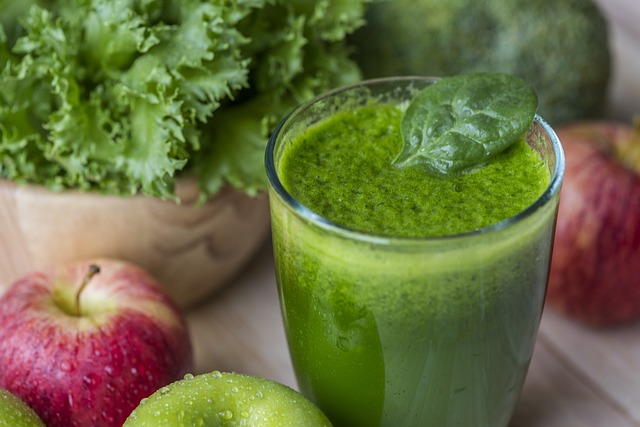
 Anything that promises detoxification sounds a little questionable – like products that claim to “pull toxins out of your system” or “cleanse the liver.” The body does have detoxification mechanisms that are working all the time, and both healthful eating and intermittent fasting can accelerate those processes. Several-day juice “fasts” are one way to tap into the benefits of intermittent fasting and enhance removal of toxins from the body, because the body enhances the removal of toxins when not digesting food and burning more fat for its energy needs. Our fat supply stores toxins, and when we lose body fat we release more toxic waste simultaneously. The body also needs adequate phytochemical and antioxidants for the liver to most effectively process fat-soluble toxins so they can be excreted via the urine.
Anything that promises detoxification sounds a little questionable – like products that claim to “pull toxins out of your system” or “cleanse the liver.” The body does have detoxification mechanisms that are working all the time, and both healthful eating and intermittent fasting can accelerate those processes. Several-day juice “fasts” are one way to tap into the benefits of intermittent fasting and enhance removal of toxins from the body, because the body enhances the removal of toxins when not digesting food and burning more fat for its energy needs. Our fat supply stores toxins, and when we lose body fat we release more toxic waste simultaneously. The body also needs adequate phytochemical and antioxidants for the liver to most effectively process fat-soluble toxins so they can be excreted via the urine.
 What will your priorities be going forward? Will you really care if you have the most recent technological advancement or will you set other priorities for yourself? Only YOU can decide how you want to integrate the hours of your day with the technology you have and use daily. As a practical matter it is through our choices that we determine the course of our lives and if we choose to spend them staring at our phones life WILL indeed pass us by. We will be sick, fat, and on drugs as we enter the very years that we wanted to enjoy. Is this you now or will you decide to change that future today by making new choices that give you time “to be” the best version of yourself that you can imagine?
What will your priorities be going forward? Will you really care if you have the most recent technological advancement or will you set other priorities for yourself? Only YOU can decide how you want to integrate the hours of your day with the technology you have and use daily. As a practical matter it is through our choices that we determine the course of our lives and if we choose to spend them staring at our phones life WILL indeed pass us by. We will be sick, fat, and on drugs as we enter the very years that we wanted to enjoy. Is this you now or will you decide to change that future today by making new choices that give you time “to be” the best version of yourself that you can imagine?